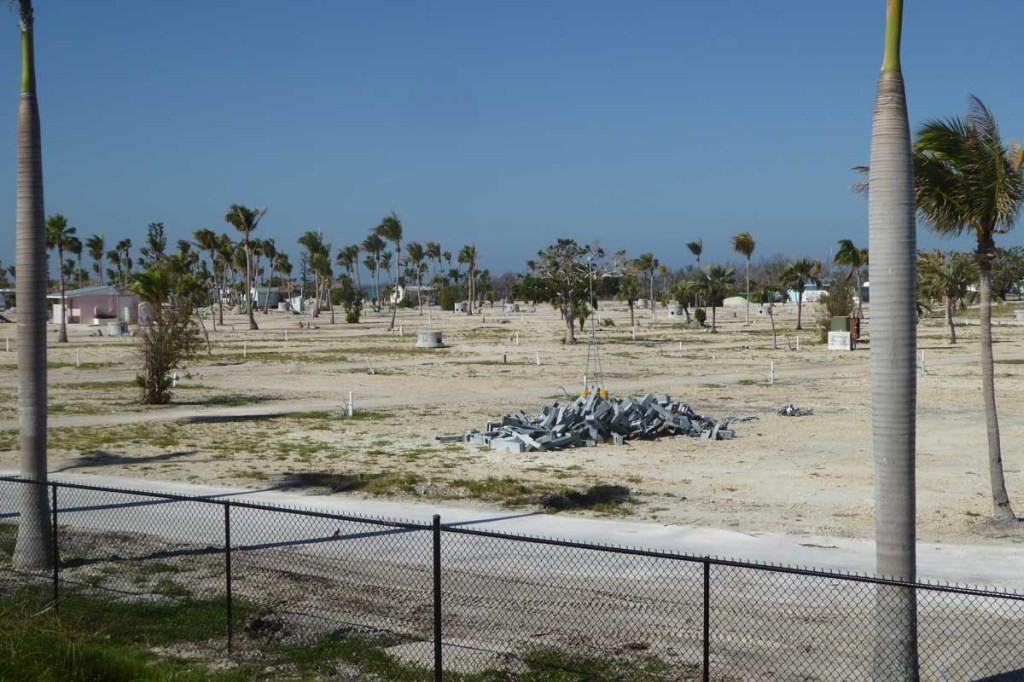The Florida Keys: Recovering from Irma
Published 12:10 pm Thursday, January 4, 2018

- A large campground on Ohio Key damaged by the hurricane.
A late December chill in South Georgia indicated it was time to head for the Florida Keys.
It wasn’t just the warm temperatures, sunset cruises, seafood and rowdy Duval Street that drew us south. We also wanted to observe how the area was faring three months following its September battering by Hurricane Irma.
Irma was a cruel lady carrying 185 miles per hour winds through the Caribbean and central Keys before heading north. While the hurricane had degraded to Category 4 prior to striking the Keys, she caused immense destruction and misery for residents.
Driving south on the Overseas Highway, we stopped to talk with several residents impacted by the storm. Most had fled north to Central Florida and beyond, but some decided to remain, taking their chances with the wind and water. A number said the experience was considerably worse than they had anticipated.
The hurricane’s path took it east of Key West across the Middle Keys that sustained the most severe damage.
Earlier forecasts were for a near direct hit on Key West followed by a northerly turn along the state’s Atlantic Coast. The actual path more closely paralleled Florida’s Gulf Coast.
During a stop at the Laura Quinn Wild Bird Sanctuary in the Northern Keys, sanctuary director Rob Bulkiewicz warned us of piles of trash along the U.S. 1 roadside that grew larger and more frequent as we drove south.
Heaps, some reaching six and seven feet high, included boards, limbs, tires, logs, furniture, appliances and twisted trailers.
We later learned the piles were paltry compared to several weeks earlier when they approached two and three stories.
Business signs were blown away and boards covered broken windows of occasional shuttered buildings.
A number of trailer parks had been totally destroyed and had been bulldozed into empty dirt lots. Numerous businesses including hotels, service stations, and restaurants remained closed in the Middle Keys.
Despite extensive September damage, most tourist attractions are up and running, although several are not yet in full operation.
John Pennecamp State Park’s visitor center and store are closed for repairs. Theater of the Sea is offering a full schedule of shows with tickets being sold out of a small booth temporarily replacing a reception area closed for repairs. The attraction’s beach area remains closed.
Boat tours to Pigeon Key beneath Seven-Mile Bridge are running although the island’s museum remains closed.
A number of attractions received little or no damage, especially in Key West.
The Key West Butterfly and Nature Conservatory survived unscathed with the butterflies suffering no harm. An employee sheltered the conservatory’s two flamingos at his home.
Docks and piers up and down the Keys took a beating. Some have been repaired but many remain closed. Others simply disappeared.
We saw dozens of boats that had been destroyed by the storm. A field next to our hotel in Marathon was filled with damaged boats. A barge in Key West’s harbor was topped with destroyed boats. We were told this was the fourth or fifth barge full of boats that had been taken out of the area.
Despite suffering extensive wind and water damage from Hurricane Irma, the Keys are recovering and tourists are returning. Key West appears pretty much back to normal with large crowds celebrating each evening’s sunset at Mallory Square.
The town’s iconic Casa Marina Hotel was fully booked for New Year’s Eve following a less than robust December.
Keys’ residents are resilient. We talked to several, most from the Midwest or Northeast who moved to Key West and have no intention of leaving.
Some are young adults who wanted to get away from home for a few months but liked the lifestyle and decided to stay. Others are retirees who tired of cold winters and moved as far south as possible.
Nearly all evacuated for Irma, but returned once the bridges were declared safe.
Our young server at a seafood restaurant, who returned after evacuating to discover the first floor of her home flooded, said she wouldn’t live anywhere else.
It is 72 degrees this morning in Key West as we sit by the swimming pool finishing this column.
According to the computer it is 0 degrees or below in our childhood hometowns in Indiana and South Dakota.
All hail to the Conch Republic. We’re glad to be in the Keys.
David and Kay Scott are authors of “Complete Guide to the National Park Lodges” (Globe Pequot). Visit them at mypages.valdosta.edu/dlscott/Scott.html. They live in Valdosta, Ga.




